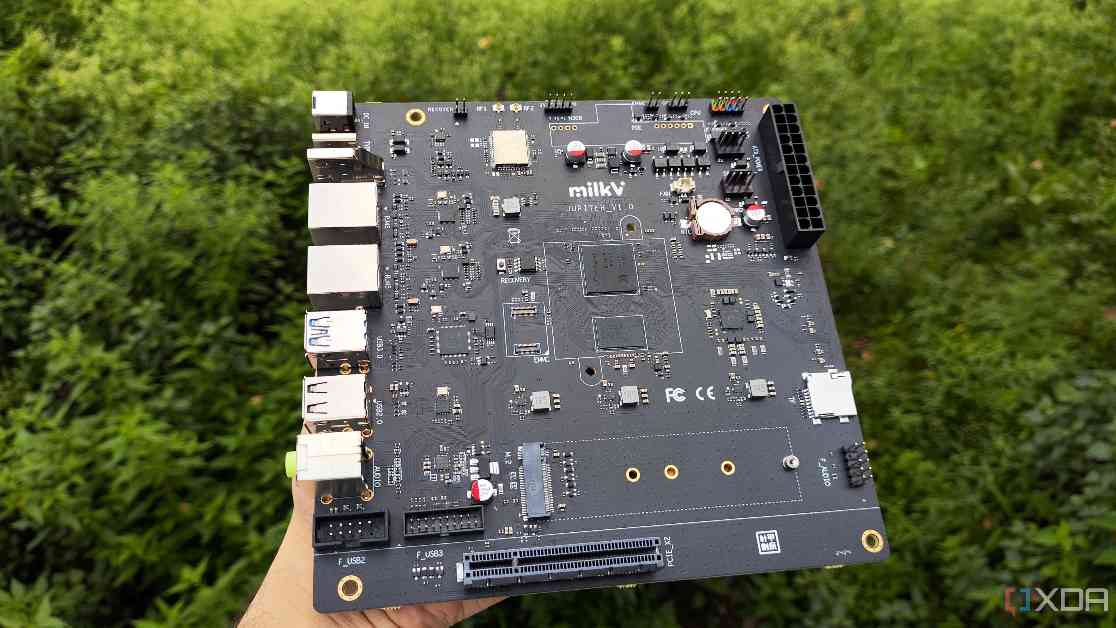Milk-V Jupiter Review: Affordable Mini-ITX Motherboard with RISC-V Processor
In the rapidly evolving world of computing, the launch of the Milk-V Jupiter mini-ITX motherboard with a RISC-V processor has captured the attention of tech enthusiasts. Priced at just $60 for the base version, the Milk-V Jupiter offers an affordable entry point into RISC-V computing for consumers. This budget-friendly motherboard features the Spacemint K1/M1 SoC, making it the world’s first Mini ITX device to support both RVA22 and RVV1.0. Additionally, it comes equipped with a PCIe x8 interface, dual Gigabit Ethernet interfaces, onboard Wi-Fi 6/BT 5.2, and support for NVMe SSDs, making it an attractive option for entry-level RISC-V desktop users.
Pros and Cons of the Milk-V Jupiter
Pros:
– Extremely affordable for a motherboard with a RISC-V CPU
– Simple OS installation process
– Includes a PCIe x8 slot for expandability
Cons:
– Limited app compatibility on a RISC-V processor
– Lack of SATA data connector
– Performance limitations in various workloads
Design and Features of the Milk-V Jupiter
The Milk-V Jupiter may appear unassuming at first glance, but it hides a powerful secret – an 8-core Spacemint X60 RISC-V processor built directly into the motherboard. Unlike traditional motherboards, the Milk-V Jupiter does not require separate RAM sticks, as it features soldered LPDDR4 memory ranging from 4GB-8GB on the K1 SKU and 16GB on the M1 model. Storage options include a microSD card slot, eMMC interface, and an M.2 SSD slot limited to PCIe 2.0 standards. However, the absence of a SATA data port may disappoint users looking to use the motherboard for NAS purposes. The motherboard also features an IMG BXE-2-32 GPU, HDMI port, and standard I/O connections for USB and audio.
The PCIe x8 slot on the Milk-V Jupiter allows users to interface with GPUs, network cards, and PCIe to SATA adapters. While this feature adds versatility to the motherboard, the 2-lane PCI Express 2.1 interface may limit its functionality until driver support improves in the RISC-V ecosystem. Powering the Milk-V Jupiter is made easy with options for a 55x25mm DC power adapter or the onboard USB Type-C connector. Additionally, the motherboard is equipped with Wi-Fi 6 and two 1GbE RJ45 ports compatible with PoE modules.
First Boot and OS Installation Process
Setting up the Milk-V Jupiter is relatively straightforward, thanks to specially modded versions of Ubuntu, Bianbu, and Fedora Workstation that are compatible with the motherboard. OS installation on a microSD card follows a similar process to setting up an OS on a single-board computer, while configuring an SSD requires the use of a dedicated flashing tool called TitanFlash from the CPU manufacturer Spacemint’s website. Despite the absence of UEFI or BIOS, the OS installation process is well-documented and user-friendly, ensuring a smooth setup experience for users.
Software and App Compatibility
The software landscape for the Milk-V Jupiter is a mixed bag, with limited app compatibility and performance issues plaguing the user experience. While everyday tasks may run smoothly on the motherboard, more demanding applications and software installations pose challenges. The lack of drivers for external devices like GPUs hinders functionality, and app compatibility is limited, with many common apps failing to run on the RISC-V processor. Users may encounter sluggish performance and compatibility issues when attempting to install and run applications on the Milk-V Jupiter.
Should You Buy the Milk-V Jupiter?
The Milk-V Jupiter presents a compelling option for developers and computing enthusiasts looking to dive into the world of RISC-V computing at an affordable price point. However, mainstream users seeking a fully functional motherboard for everyday tasks may find the Milk-V Jupiter lacking in app support and performance capabilities. While the motherboard shows promise for future developments in the RISC-V ecosystem, it may not yet be ready for widespread adoption outside of niche markets. As the RISC-V landscape continues to evolve, the Milk-V Jupiter offers a glimpse into the potential of open-source computing but falls short of mainstream expectations in its current state.






















